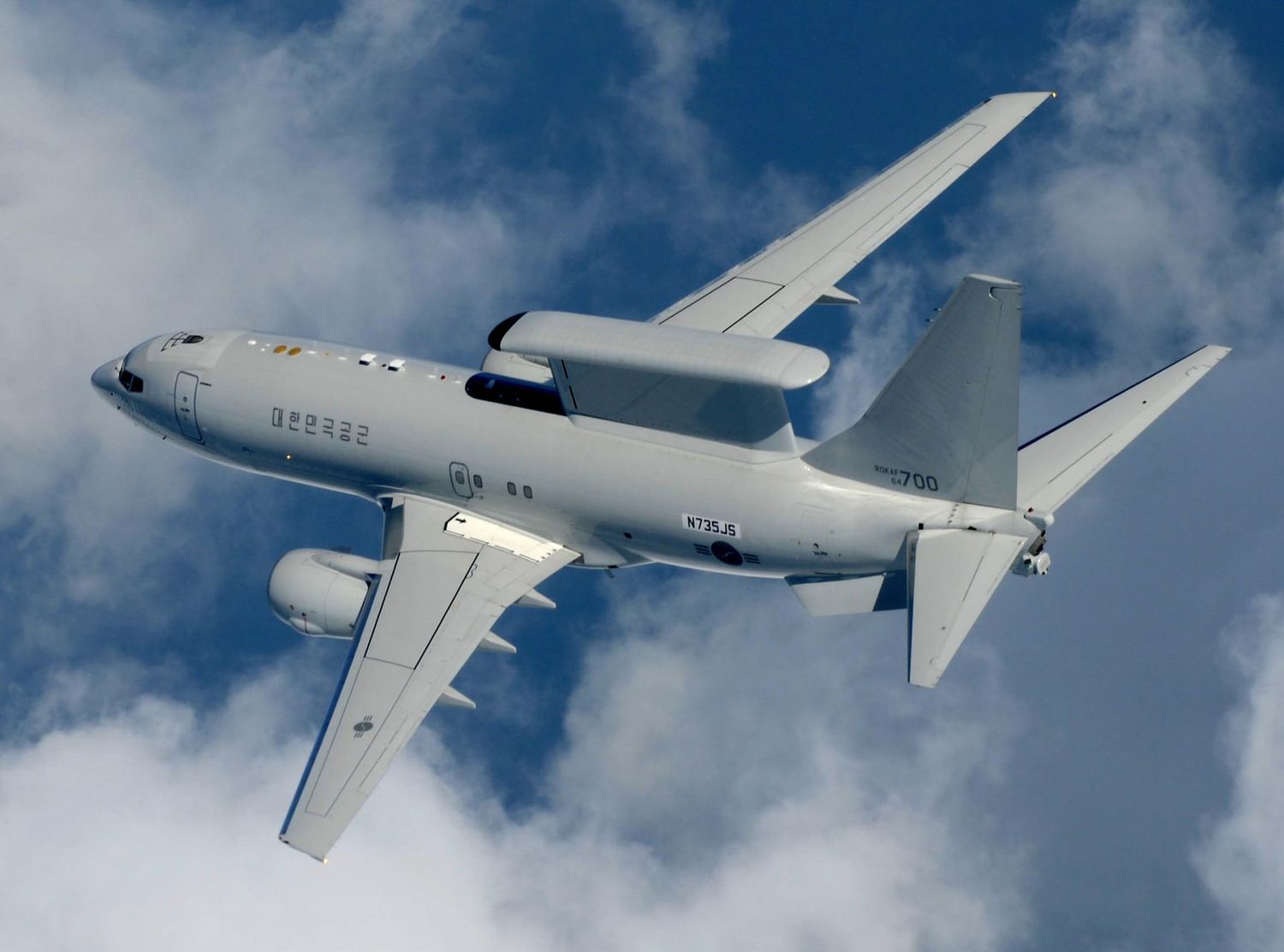The U.S. State Department greenlights a potential Foreign Military Sale (FMS) to the Republic of Korea for the procurement of four Boeing E-7 airborne early warning and control (AEW&C) aircrafts, along with a full suite of support systems, for an estimated $4.92 billion.
Equipment requested
According to the press release issued by the Defense Security Cooperation Agency (DSCA), the Government of South Korea requested the purchase of:
- Four (4) Boeing E-7 AEW&C aircraft
- Ten (10) CFM56 jet engines (8 installed, 2 spares)
- Advanced defense systems:
- Seven (7) Guardian Laser Transmitter Assemblies (GLTA)
- Eight (8) Large Aircraft Infrared Countermeasures (LAIRCM) AN/AAR-57 AN/AAQ 24(V)N systems (4 installed, 4 spares)
- Ten (10) Embedded GPS/INS navigation systems with anti-spoofing (SAASM) modules and M-code receivers (8 installed, 2 spares)
- Six (6) Multifunctional Information Distribution System Joint Tactical Radio Systems (MIDS JTRS TTNT) with tactical targeting network technology (4 installed, 2 spares)
Additional components to optimize E-7 operations
Beyond the main elements, the package includes an extensive range of support devices and equipment:
- AN/ARC-210 communication radios
- AN/ALE-47 electronic countermeasure dispensers
- AN/APX-119 identification friend or foe (IFF) systems
- Missile warning sensors
- Communication security (COMSEC) encryption equipment
The package also covers logistical and operational support, including spare parts, consumables, accessories, technical publications, classified and unclassified software, personnel training, test equipment, and technical and logistics assistance from the U.S. government and contractors.
Más medios AEW&C II para la ROKAF
The Republic of Korea Air Force (ROKAF) currently operates four Boeing E-7A AEW&C aircrafts, purchased from the United States between 2011 and 2012 as part of the Airborne Early Warning Program. These aircraft are today the ROKAF’s primary asset for surveillance and early warning in its airspace. However, this capability is considered limited in the face of growing warmongering rhetoric from Pyongyang and deteriorating global security. For this reason, South Korea’s Defense Acquisition Program Administration (DAPA) has launched the Airborne Early Warning Program-II, which seeks to bolster the fleet with more AEW&C planes to better respond to security challenges in the region.

Although Boeing’s E-7A has the advantage of already being operational in the Korean Air Force, which would facilitate a quick integration of new aircraft as it is a known system with established logistics, the decision is not yet closed. Boeing must compete with proposals from KAI and SAAB, which offer the GlobalEye, and Korean Air with L3Harris, who present an AEW&C solution based on the Israeli CAEW system. These alternatives could be considered, in principle, more economical platforms both in terms of acquisition and operation.


Comentarios
Para comentar, debés estar registrado
Por favor, iniciá sesión